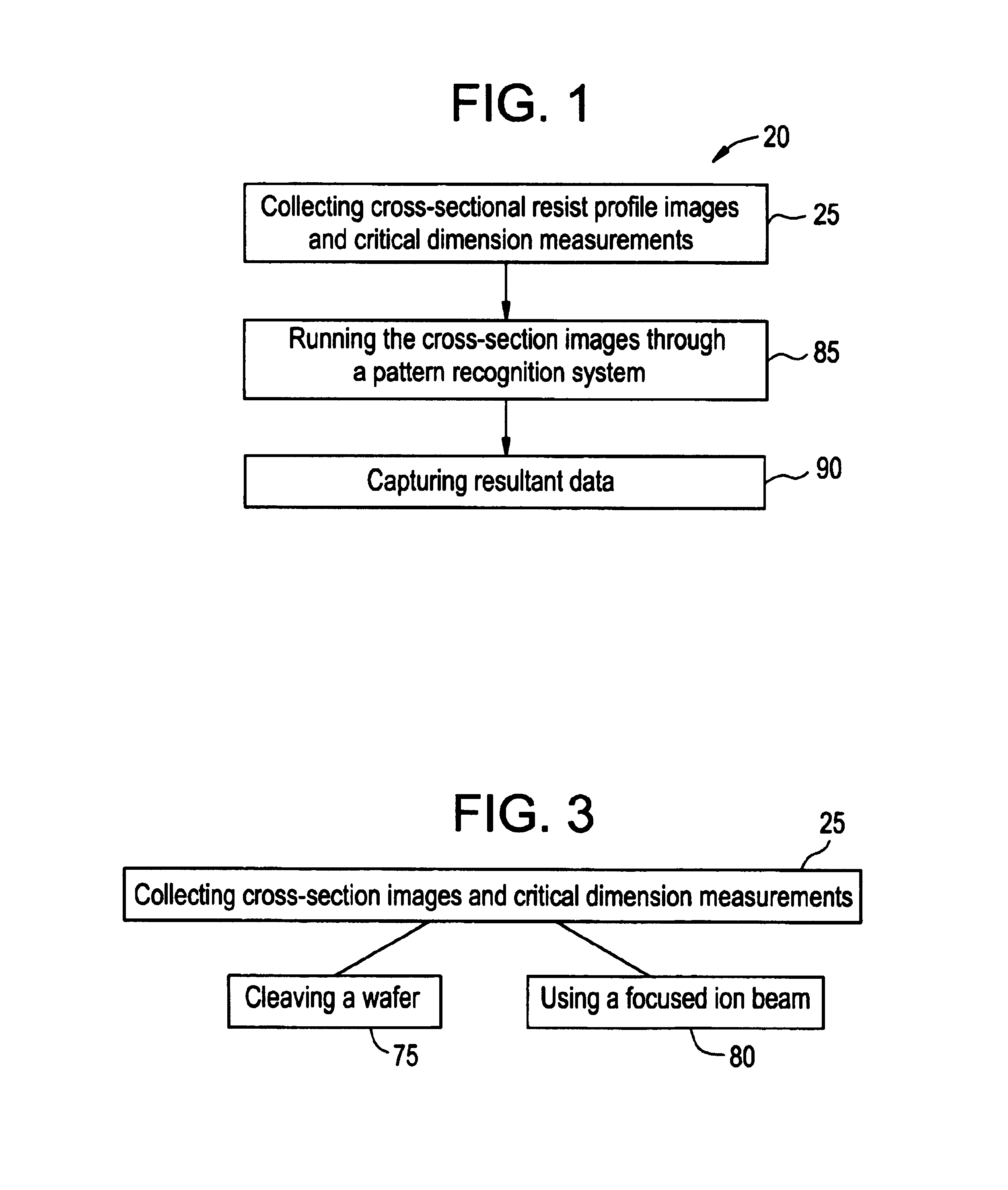Method for improving OPC modeling
a technology of opc modeling and modeling tools, applied in the direction of mechanical measurement arrangements, mechanical roughness/irregularity measurements, instruments, etc., can solve the problems of image distortion, first principal models are susceptible to the same inaccuracy as seen, distorted images of original layout patterns, etc., to achieve the effect of affecting the accuracy of opc application and process window prediction
- Summary
- Abstract
- Description
- Claims
- Application Information
AI Technical Summary
Benefits of technology
Problems solved by technology
Method used
Image
Examples
Embodiment Construction
[0016]While this invention may be susceptible to embodiment in different forms, there is shown in the drawings and will be described herein in detail, a specific embodiment with the understanding that the present disclosure is to be considered an exemplification of the principles of the invention, and is not intended to limit the invention to that as illustrated and described herein.
[0017]A method (20) of tuning a model is illustrated in FIG. 1. The method (20) tunes a model using pattern recognition of cross-section images through focus to capture the top critical dimension, the bottom critical dimension, resist loss, profile and the diffusion effects through focus, whereas the prior art methods assume this information based only on top down critical dimensions / images collected from top down scanning electron microscopes. Cross-sectional data, whether collected from a focused ion beam and / or a cleaved wafer, provides more information (such as top and bottom critical dimension, resi...
PUM
| Property | Measurement | Unit |
|---|---|---|
| critical dimension | aaaaa | aaaaa |
| critical dimensions | aaaaa | aaaaa |
| feature size | aaaaa | aaaaa |
Abstract
Description
Claims
Application Information
 Login to View More
Login to View More - R&D
- Intellectual Property
- Life Sciences
- Materials
- Tech Scout
- Unparalleled Data Quality
- Higher Quality Content
- 60% Fewer Hallucinations
Browse by: Latest US Patents, China's latest patents, Technical Efficacy Thesaurus, Application Domain, Technology Topic, Popular Technical Reports.
© 2025 PatSnap. All rights reserved.Legal|Privacy policy|Modern Slavery Act Transparency Statement|Sitemap|About US| Contact US: help@patsnap.com



